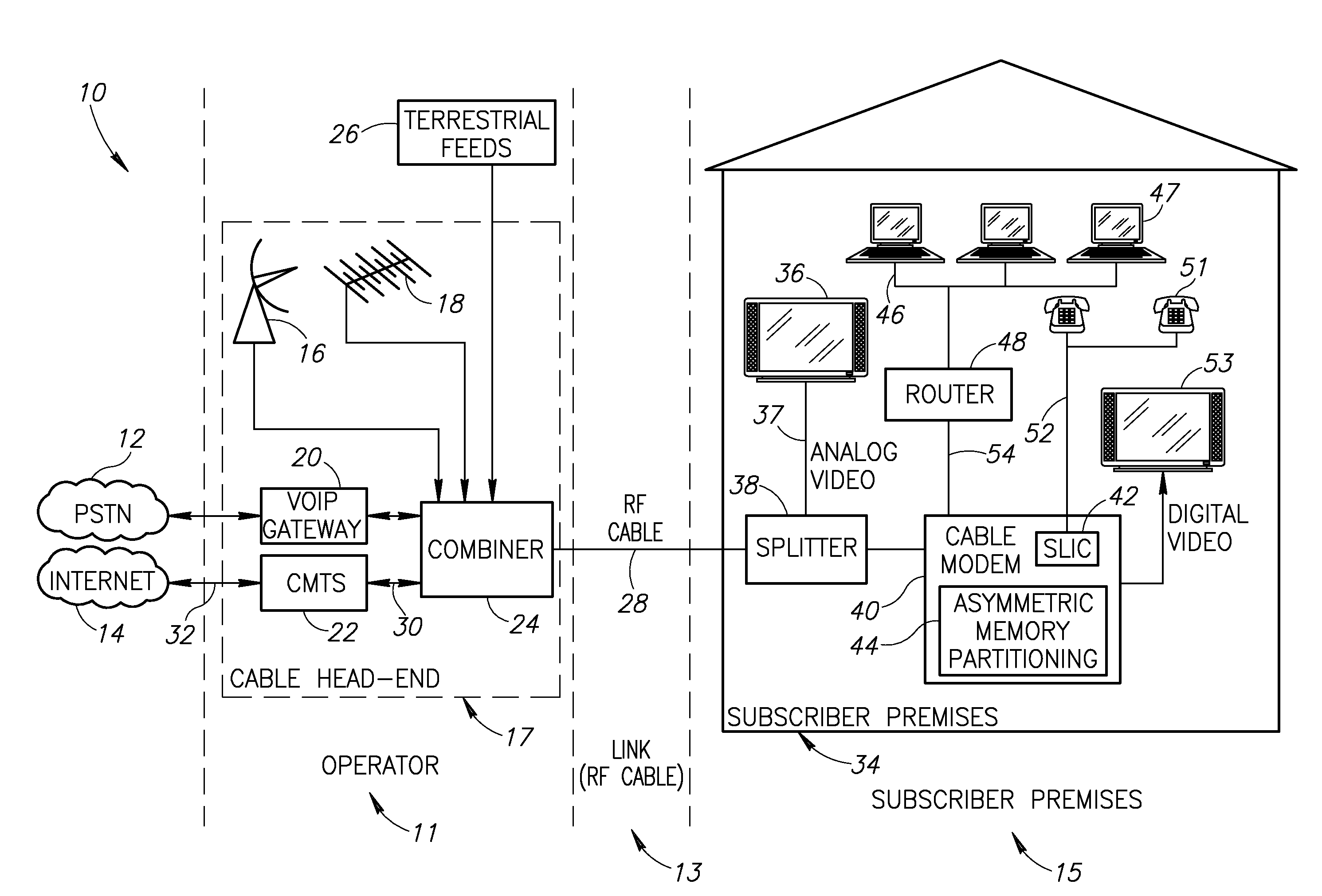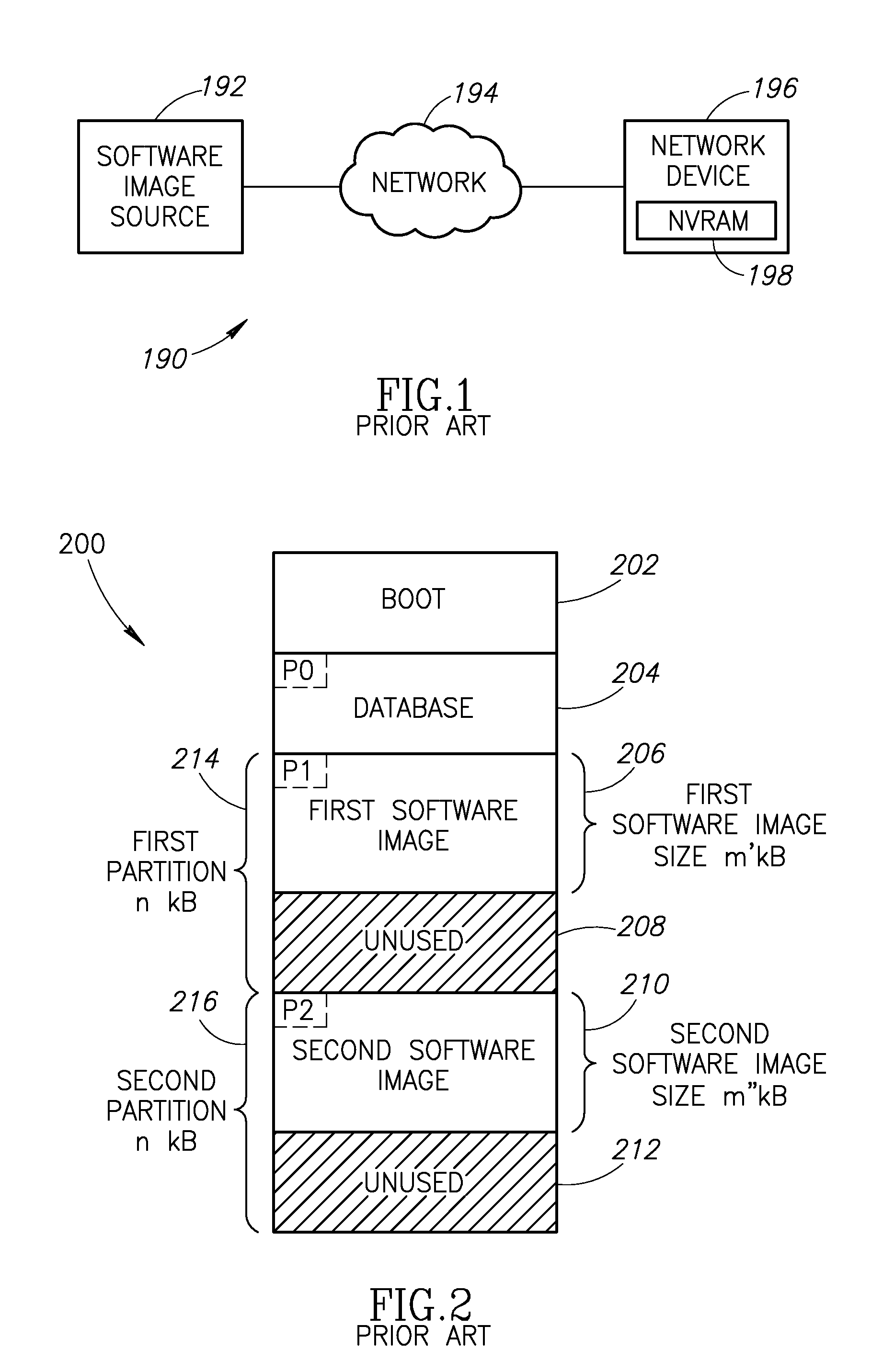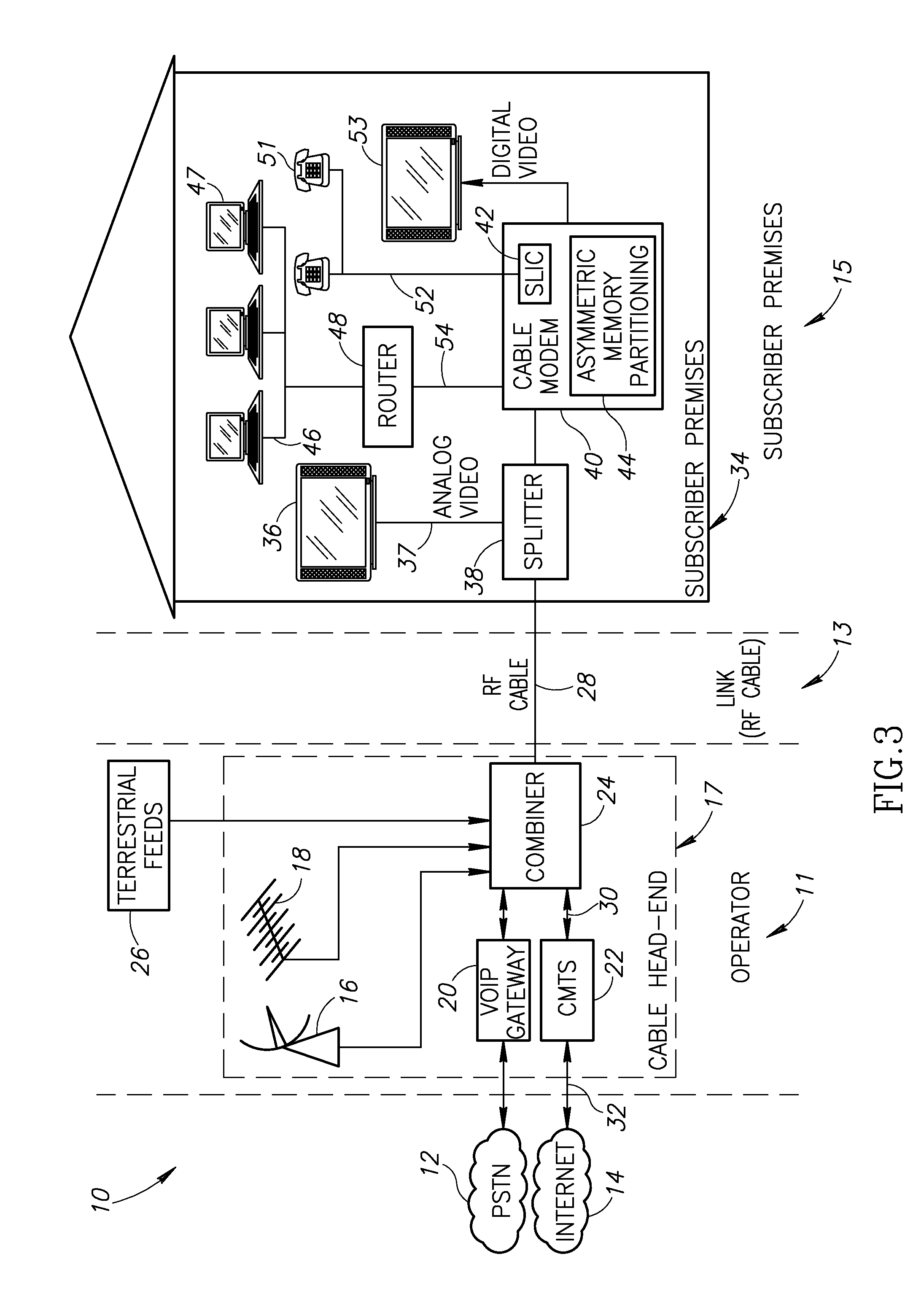Dynamic asymmetric partitioning of program code memory in network connected devices
a network connected device and program code technology, applied in the direction of memory address/allocation/relocation, instruments, television systems, etc., can solve the problems of requiring large amounts of bandwidth, requiring twice the amount of flash memory space to store two separate and complete sets of code, etc., to reduce product returns and service calls, the effect of reducing memory limitations
- Summary
- Abstract
- Description
- Claims
- Application Information
AI Technical Summary
Benefits of technology
Problems solved by technology
Method used
Image
Examples
Embodiment Construction
Notation Used Throughout
[0051]The following notation is used throughout this document.
TermDefinitionACAlternating CurrentADCAnalog to Digital ConverterASICApplication Specific Integrated CircuitATMAsynchronous Transfer ModeAVIAudio Video InterfaceBMPWindows BitmapBOMBill of MaterialBWABroadband Wireless AccessCATVCommunity Antenna Television or Cable TVCBWCapture BandwidthCMCable ModemCMTSCable Modem Termination SystemCOCentral OfficeCPUCentral Processing UnitCRCCyclic Redundancy CodeDACDigital to Analog ConverterDCDirect CurrentDECTDigital Enhanced Cordless TelecommunicationsDHCPDynamic Host Control ProtocolDOCSISData Over Cable Service Interface SpecificationDSDownstreamDSLDigital Subscriber LineDSPDigital Signal ProcessorDVRDigital Video RecorderECMEmbedded Cable ModemEDGEEnhanced Data rates for GSM EvolutionEEPROMElectrically Erasable Programmable Read Only MemoryEEROMElectrically Erasable Read Only MemoryEMTAEmbedded Multimedia Terminal AdapterEPROMErasable Programmable Read On...
PUM
 Login to View More
Login to View More Abstract
Description
Claims
Application Information
 Login to View More
Login to View More - R&D
- Intellectual Property
- Life Sciences
- Materials
- Tech Scout
- Unparalleled Data Quality
- Higher Quality Content
- 60% Fewer Hallucinations
Browse by: Latest US Patents, China's latest patents, Technical Efficacy Thesaurus, Application Domain, Technology Topic, Popular Technical Reports.
© 2025 PatSnap. All rights reserved.Legal|Privacy policy|Modern Slavery Act Transparency Statement|Sitemap|About US| Contact US: help@patsnap.com



